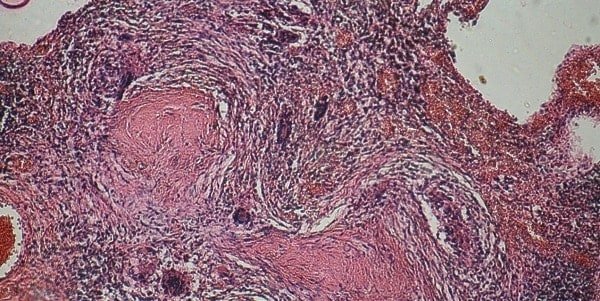Purulent meningitis

Purulent meningitis is an infectious disease of a bacterial nature. It is caused by specific microorganisms, which in medicine are called meningococci.
Their action in the human body is aimed at the development of purulent involvement of the dura mater, which is accompanied by corresponding symptoms. Meningococci are transmitted through the air-droplet route, but only under the condition of close contact of the infected person with a healthy person.
Illness from this form of meningitis is possible at any age.
There are certain factors that increase risk levels. These include smoking, constant exposure to stress, frequent pharyngitis, sunstroke, acute respiratory diseases and even overcooling of the body.
Into the brain, meningococci penetrate through the hematogenous route, that is, through the blood, and there already begins the development of the purulent inflammatory process.
What are the symptoms?
The clinical manifestations of purulent meningitis distinguish it from other forms of inflammation of the meninges. When a purulent process develops in the brain, the body temperature begins to rise rapidly, reaching 40 degrees Celsius.
A person feels severe chills, a headache that worsens, frequent vomiting and continuous nausea, after a few days convulsions and epileptic seizures appear.
A roseola and hemorrhagic rash appears on the skin and mucous membranes. Patients feel sleepy, worry for no reason, begin to lose consciousness, develop light and sound phobia.
The occipital muscles are very tense, bending the head is practically impossible.
Also with this disease, Brudzinski’s syndrome develops, that is, the knee and hip joints spontaneously fold, and Kerning’s syndrome – the lower limbs lose the ability to fully unfold. The sensitivity of the body increases, the patients acutely react negatively to any touch.
The purulent form of meningitis can be accompanied by an ulcer, pyelitis /inflammatory process of the kidney basins/, cystitis and joint involvement. If the treatment regimen is violated or if therapy is not applied, the patient may fall into a coma.
The most common symptoms and signs of the disease include – fading of the surface of the skin, the appearance of a rash, swelling of the mouth and nose. When he is conscious, the patient feels a strong thirst.
Diagnosis
Diagnosis of this form of meningitis is carried out on the basis of laboratory tests and in the presence of symptoms specific to this disease.
The complete blood count shows the presence of an inflammatory process in the body. Increased levels of leukocytes – immune cells and an increased sedimentation rate of erythrocytes are found.
A sample for analysis of cerebrospinal fluid must be taken – a cerebrospinal puncture is performed. In the presence of purulent meningitis this fluid is cloudy and outwardly resembles pus.
When examined under a microscope, high levels of leukocytes, proteins and immune bodies are found in it.
It is also possible to find the causative agents of the disease in the cerebrospinal fluid.
Treatment of purulent meningitis
With competent and timely applied therapy, the disease undergoes a complete reverse development within 2 weeks. At the first signs of purulent inflammation of the meninges, the patient is hospitalized in an intensive care unit.
He is prescribed antibacterial preparations that directly affect the brain. If no improvements occur after 3 days of taking drugs from this group, a repeat puncture of the cerebrospinal fluid is prescribed and then the drugs are changed.



